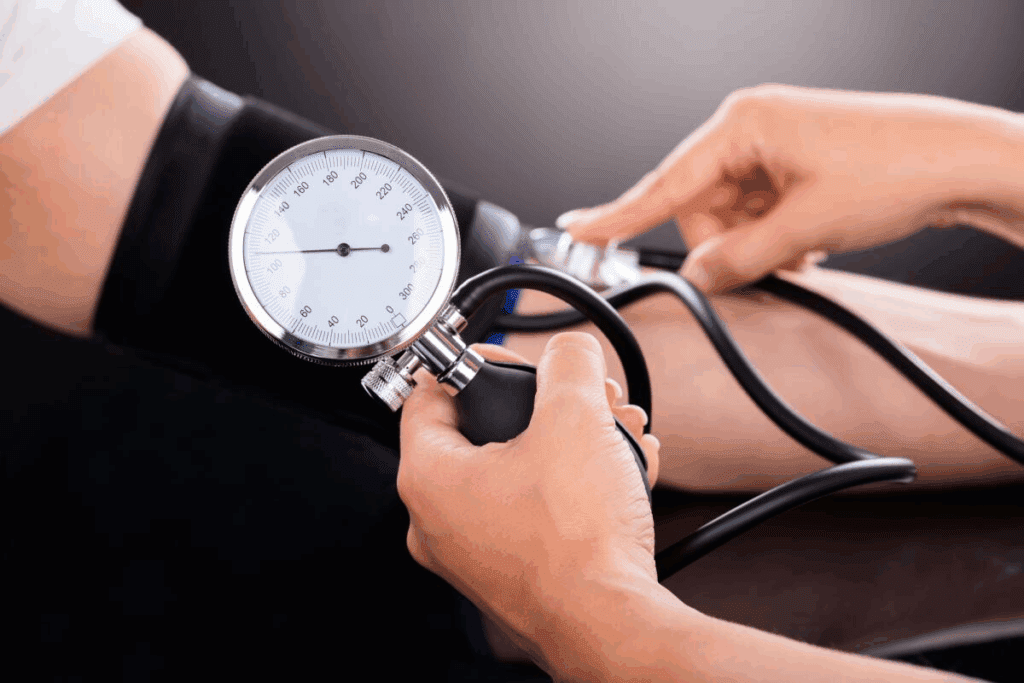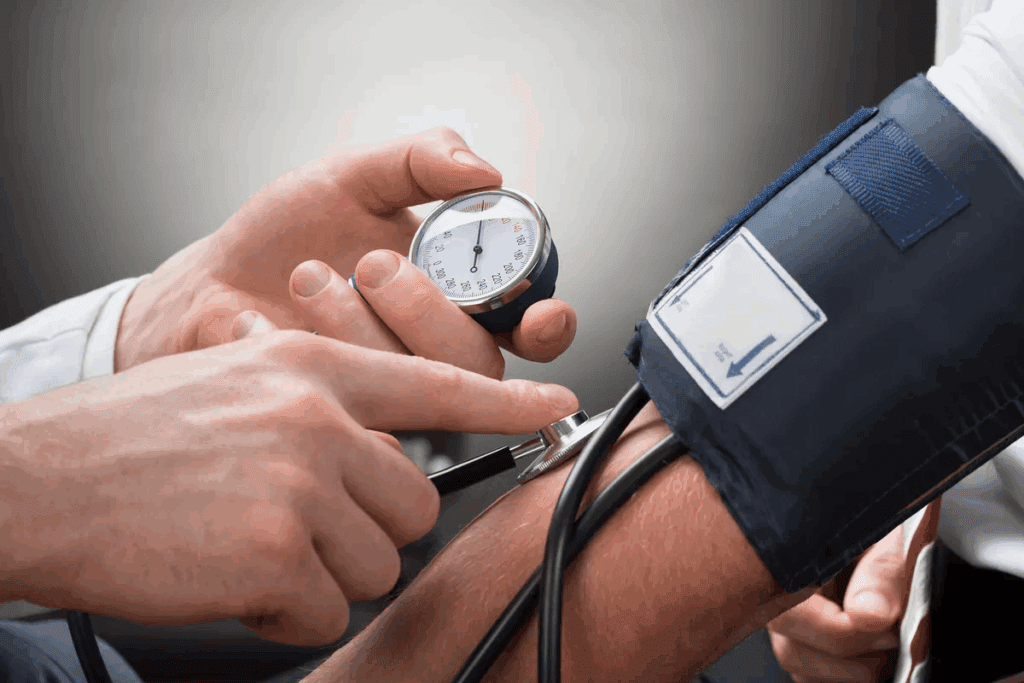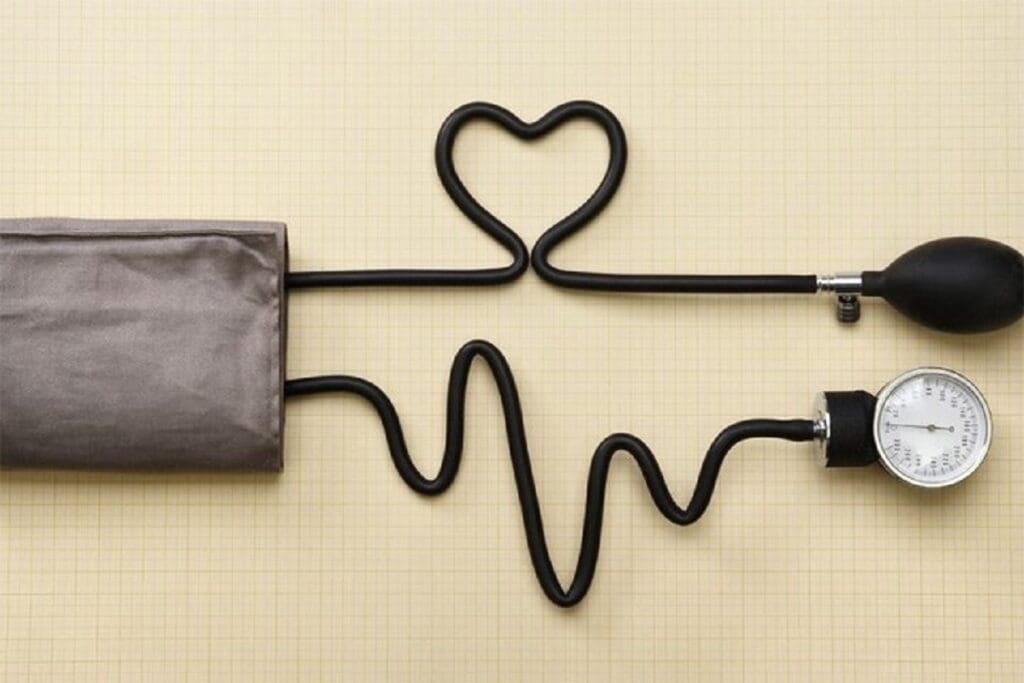
We usually worry about high blood pressure, but low blood pressure, or hypotension, is also risky. It’s dangerous if it drops suddenly. Discover what low blood pressure is dangerous, when it becomes a health risk, and how to manage it effectively.
A reading below 90/60 mmHg is usually low. But some people naturally have lower blood pressure without problems. If blood pressure gets too low, it can cause issues like dizziness, fainting, and blurry vision.
At Liv Hospital, we stress the need to know about hypotension. We focus on its causes and symptoms to give top-notch care. Our medical standards are world-class, ensuring the best treatment for hypotension and heart issues.

To understand low blood pressure, we first need to know what blood pressure is. It shows the force of blood against artery walls as the heart pumps. This is vital for the body’s health.
Normal blood pressure is less than 120/80 mmHg. The top number, or systolic pressure, shows the pressure when the heart beats. The bottom number, or diastolic pressure, shows the pressure between heartbeats. Keeping blood pressure in this range is key for good health.
The American Heart Association defines blood pressure categories as follows:
Blood pressure is measured with a sphygmomanometer, which can be manual or digital. The cuff goes around the upper arm. The pressure is measured in millimeters of mercury (mmHg). It’s shown as two numbers: systolic and diastolic.
Keeping blood pressure in check is essential for heart health. It ensures organs get the oxygen and nutrients they need. It also prevents damage to blood vessels and lowers the risk of heart disease, stroke, and kidney disease.
The role of blood pressure regulation is critical in several areas:

It’s important to know when low blood pressure is dangerous. Low blood pressure, or hypotension, can cause organs to not get enough blood. This can lead to damage or even failure in severe cases.
Hypotension is when blood pressure is below 90/60 mmHg. Doctors use this to spot people at risk. But, blood pressure changes all day, and what’s low for one might be normal for another.
The 90/60 mmHg mark is key for spotting hypotension. If blood pressure drops below this, the body might not get enough blood. This can cause dizziness, fainting, and poor blood flow to important organs.
Remember, this threshold isn’t set in stone. Things like age, health, and physical shape affect what’s considered low blood pressure.
While 90/60 mmHg is a general guide, safe blood pressure levels vary from person to person. For some, a reading below 90/60 mmHg might not be a problem. But for others, it could be very dangerous. Things like health conditions, medicines, and lifestyle can change what’s safe for each person.
The signs of very low blood pressure can be different. It’s important to spot them early to get help fast. Knowing the early signs and serious symptoms is key.
Early signs include dizziness, lightheadedness, and fainting. These happen when the brain doesn’t get enough blood. Some people might also see blurred vision or feel confused.
Medical organization says, “Low blood pressure can cause dizziness and fainting if the brain doesn’t receive enough blood flow.” Spotting these signs early can help get medical help quickly.
Severe low blood pressure can lead to shock, a very serious condition. Signs of shock are rapid heartbeat, shallow breathing, and cold, clammy skin. If you see these, get emergency help right away.
“Shock is a serious medical condition that occurs when the body is not getting enough blood flow. This can be life-threatening if not treated promptly.”
American Heart Association
Low blood pressure symptoms can differ by age. Older adults might have more severe symptoms because of health issues. Young people might feel fatigue or weakness.
A study in the Journal of the American Geriatrics Society shows older adults with low blood pressure are at risk for falls. This shows why age matters when treating low blood pressure.
By knowing the symptoms of low blood pressure and how they change with age, we can act fast. This helps in getting the right treatment and managing the condition well.
It’s important to know why blood pressure drops. Hypotension can come from many things. Knowing these reasons helps in treating it.
Dehydration is a big reason for low blood pressure. When we lose more fluids than we take in, our blood volume goes down. This can happen from vomiting, diarrhea, or sweating a lot without drinking enough water. Blood loss, from injuries or internal bleeding, also lowers blood volume and can cause hypotension.
Some medicines can lower blood pressure as a side effect. Diuretics make us pee more and can cause dehydration if not balanced. Alpha blockers help with high blood pressure and prostate issues but can make blood vessels relax and widen, lowering blood pressure.
Many health issues can lead to hypotension. Heart problems like heart failure or bradycardia (a slow heart rate) make it hard for the heart to pump enough blood. This can cause low blood pressure. Endocrine disorders, like Addison’s disease and thyroid disease, also affect how blood pressure is regulated.
Knowing these causes is key to managing and preventing low blood pressure. By tackling the root causes, we can lower our risk of hypotension and its problems.
The danger zone for blood pressure is a big worry for both patients and doctors. Blood pressure that’s too low can cause serious problems. It might not flow well to important organs.
A blood pressure of 90/40 mmHg or lower is a big concern. It means the blood pressure is not strong enough. This can affect the brain and other vital organs.
Symptoms like dizziness, fainting, and shock can happen. It’s important to catch these signs early to avoid bigger problems.
What’s considered low blood pressure can change with age. Older adults might show symptoms at higher blood pressure levels. This is because their blood vessels are less flexible.
Knowing these differences helps doctors treat low blood pressure better. It’s important for all ages and health conditions.
Low blood pressure can be very dangerous. Readings like BP 90/40 are risky, with symptoms like confusion and rapid heartbeat. If you have these, you need to get help right away.
Seek medical help fast if you have these symptoms.
In short, knowing the danger zone for blood pressure is key to staying healthy. Recognizing the signs and getting help quickly is important. This can prevent serious health issues.
Doctors use many steps to find out if you have low blood pressure. They look at your medical history and do tests. This helps them find the cause and how to treat it.
To find hypotension, doctors check your medical history and do a physical exam. They also do medical tests. These tests include blood work to check for anemia or infections. They also use electrocardiograms (ECGs) to see how your heart is doing.
They might also do other tests like:
Monitoring your blood pressure at home is also important. Patients are told to:
Monitoring at home gives doctors important information. This helps them make better treatment plans.
Knowing when to see a doctor is key if you have low blood pressure. You should go if you:
Seeing a doctor early can help prevent serious problems.
Low blood pressure, or hypotension, can affect heart health in big ways. While high blood pressure is well-known as a heart disease risk, low blood pressure is also important. We’ll look at how low blood pressure and heart health are connected, including if it can signal a heart attack.
Low blood pressure isn’t usually a direct cause of heart attacks. But, it can show there’s a heart problem or cardiovascular disease. A sudden drop in blood pressure might mean a heart attack, if you also have chest pain or trouble breathing.
Key symptoms to watch for include:
Hypotension can be a sign of heart problems or contribute to them. People with heart disease might have low blood pressure because of:
It’s important to understand how hypotension and heart disease are connected to take care of your heart.
Low blood pressure can harm heart function in several ways. If blood pressure is too low, the heart might not get enough blood. This can lead to:
We’ll talk about how low blood pressure affects heart function and overall heart health. It’s vital to check your blood pressure often and see a doctor if you notice any odd symptoms.
Regular monitoring and professional advice are essential for managing low blood pressure and keeping your heart healthy.
Untreated low blood pressure can cause severe and life-threatening problems. When blood pressure drops too low, organs don’t get enough oxygen and nutrients. This can lead to damage or failure. We will look at the serious complications that can happen if low blood pressure is not treated.
Prolonged low blood pressure can harm vital organs. The kidneys are very sensitive to low blood flow. Without enough oxygen and nutrients, kidneys can suffer acute injury or worsen existing problems.
The heart, brain, and other organs also face risks from low blood supply. This can cause various complications.
Untreated low blood pressure can lead to shock. Shock happens when tissues don’t get enough blood flow. This can cause cell damage and serious health risks.
There are different types of shock, like hypovolemic shock from blood loss and cardiogenic shock from heart issues. If not treated quickly, shock can cause organ failure and even death.
Untreated low blood pressure can have long-term health effects. Repeated episodes of low blood pressure can cause chronic fatigue, dizziness, and a lower quality of life. Older adults are at higher risk of falls and injuries, which can worsen health outcomes.
It’s important to understand these risks to provide timely medical care. By addressing the causes and managing symptoms, we can reduce the risk of serious complications.
Treating hypotension involves several steps, from quick emergency actions to making lifestyle changes. It’s important to know how severe the low blood pressure is and what treatment works best.
Severe hypotension needs quick medical help. Doctors might give intravenous fluids to boost blood volume or medicines to lift blood pressure. Quick action is key to avoid organ damage and serious issues.
These emergency treatments happen in hospitals. There, doctors can watch patients closely. They aim to keep blood pressure stable and ensure vital organs get enough blood.
Some people might need medicine to handle hypotension. These drugs can increase blood volume or help the heart pump better. Fludrocortisone and midodrine are common ones.
| Medication | Use | Effect |
| Fludrocortisone | Increases blood volume | Helps retain sodium and water |
| Midodrine | Constricts blood vessels | Raises blood pressure |
Making lifestyle changes is also key in managing hypotension. Simple steps can help ease symptoms and stop low blood pressure episodes. These include eating more salt, drinking lots of water, and avoiding things that can lower blood pressure.
Drinking enough water is very important. Dehydration can make low blood pressure worse. Drinking water and electrolyte-rich drinks helps keep blood volume up.
Combining emergency care, medicines, and lifestyle changes helps people with hypotension manage their condition well. This reduces the chance of serious problems.
To prevent low blood pressure, we need a full plan. This includes daily habits and changing risk factors. Knowing the causes and taking steps to prevent them can lower the risk of low blood pressure.
Managing daily life is key to avoiding low blood pressure. Drinking lots of water and avoiding sudden moves are important. Checking blood pressure often helps catch any changes early.
Here are some daily tips to help manage low blood pressure:
Changing risk factors is vital to prevent low blood pressure. This means managing medications that can cause low blood pressure. It’s also key to deal with underlying health issues like heart problems and nutritional deficiencies.
| Risk Factor | Modification Strategy |
| Dehydration | Increase fluid intake |
| Medication side effects | Consult doctor about alternative medications |
| Underlying medical conditions | Manage conditions through treatment and lifestyle changes |
Some groups are more at risk for low blood pressure, like the elderly and those with health issues. For them, regular checks and special care plans are essential. This might mean more blood pressure tests and changes to their treatment.
By using these strategies and knowing the risks, we can stop low blood pressure episodes. This helps keep our health in good shape.
Understanding and managing low blood pressure is key to avoiding serious problems. We’ve looked into what low blood pressure is, why it happens, its signs, and how to treat it.
It’s important to know the signs of very low blood pressure and when to get help. We talked about how to handle hypotension to avoid long-term health issues.
In short, knowing the risks of low blood pressure and acting early can greatly improve health. We aim to give readers the tools to handle hypotension well.
We want to give a full overview of low blood pressure to help people make smart health choices. With the right info and support, people can manage their blood pressure better and lower the risk of complications.
Low blood pressure, or hypotension, is dangerous if it’s below 90/60 mmHg. But, what’s safe can differ for everyone.
Low blood pressure might mean a heart attack if you also have chest pain or feel dizzy. We’ll look into how hypotension affects the heart.
Blood pressure too low can harm vital organs. Readings like BP 90/40 or lower are risky, causing confusion or fainting.
Signs include dizziness, fainting, and confusion. These symptoms need quick medical help.
Dehydration, blood loss, and some medicines can cause it. So can heart failure or endocrine disorders.
Doctors use tests like blood pressure checks and physical exams. At-home monitoring helps track blood pressure.
Treatment includes emergency care, medicines, and lifestyle changes. These help manage symptoms and prevent future episodes.
Daily management and lifestyle changes help. At-risk groups, like the elderly, need special care.
Some people naturally have low blood pressure without issues. But, sudden drops or symptoms are a concern.
The danger zone is readings like BP 90/40 or lower. These are risky, even with severe symptoms.
Yes, untreated hypotension can harm vital organs. It can even cause shock.
A reading below 90/60 mmHg is generally hypotensive. But, safe levels vary by person.
National Center for Biotechnology Information. (2025). What Is Considered Dangerous Low Blood Pressure We. Retrieved from https://www.ncbi.nlm.nih.gov/books/NBK459152/
Subscribe to our e-newsletter to stay informed about the latest innovations in the world of health and exclusive offers!
WhatsApp us